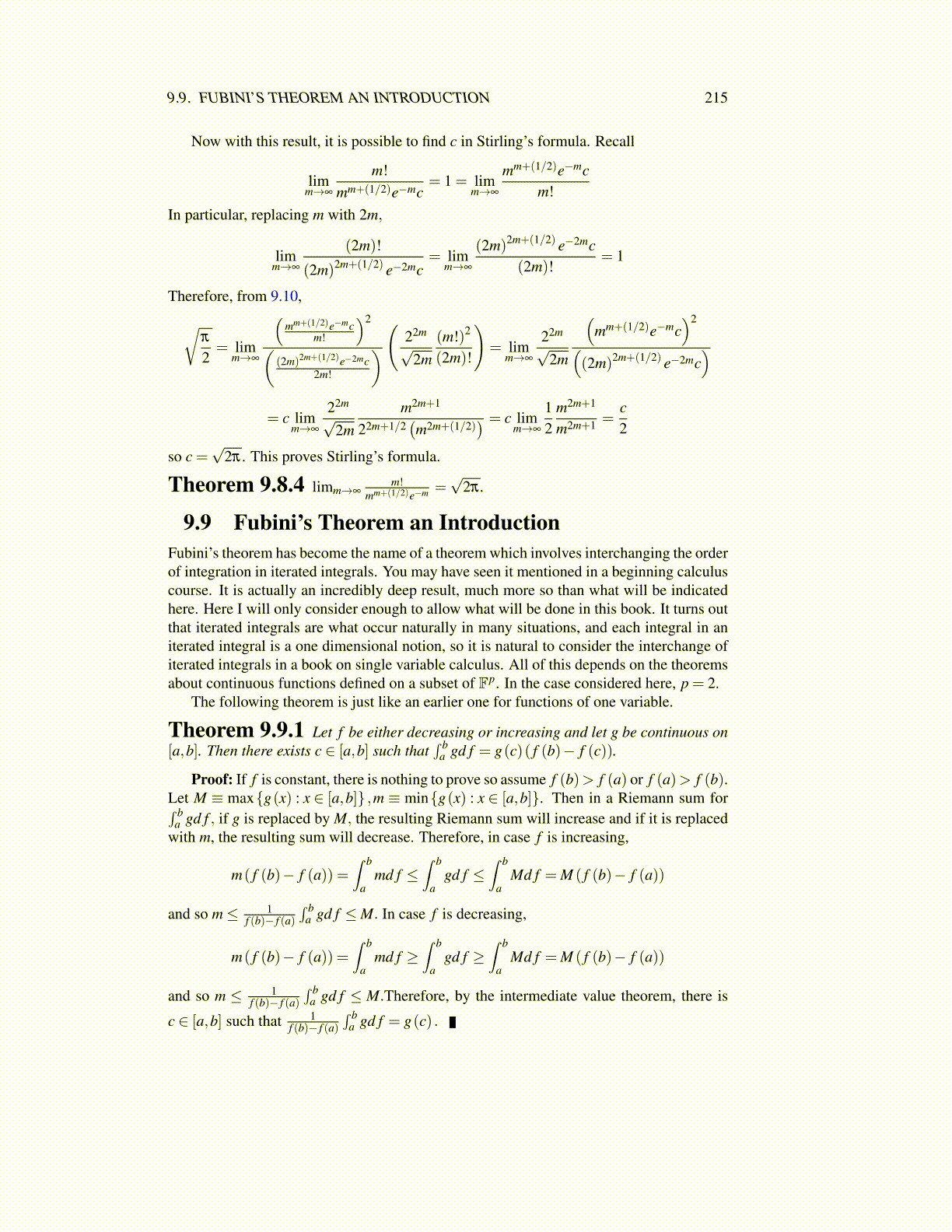
9.10. GEOMETRIC LENGTH OF A CURVE IN Rp 215
Proof: Using the theorems about the integral obtained earlier, in particular the funda-mental theorem of calculus,
ddx
(∫ x
0e−t2
dt)2
= 2(∫ x
0e−t2
dt)
e−x2= 2x
(∫ 1
0e−x2u2
du)
e−x2
= 2x∫ 1
0e−x2(u2+1)du
Then, integrating both sides and interchanging the order of integration with Fubini’s theo-rem, Theorem 9.9.4,(∫ x
0e−t2
dt)2
=∫ x
02v∫ 1
0e−v2(u2+1)dudv =
∫ 1
0
∫ x
02ve−v2(u2+1)dvdu
=∫ 1
0
−e−v2(u2+1)
u2 +1|x0du =
∫ 1
0
(1
u2 +1− e−x2(u2+1)
u2 +1
)du
Hence ∫ x
0e−t2
dt =
√√√√∫ 1
0
(1
u2 +1− e−x2(u2+1)
u2 +1
)du
Now the integrand on the right converges uniformly to 1u2+1 as x→ ∞ and so we can pass
to a limit as x→ ∞ and obtain limx→∞
∫ x0 e−t2
dt =√∫ 1
01
u2+1 du =√
π
2 .
9.10 Geometric Length of a Curve in Rp
I think that the right way to consider length is in terms of one dimensional Hausdorffmeasure. However, this is not a topic for this book. In this section, I am using the Euclideannorm because this is the one which corresponds to the usual notion of distance.
Definition 9.10.1 A set of points γ∗ ⊆ Rp is an oriented piecewise smooth curveif there is an oriented interval [a,b] and γ∗ ≡ γ ([a,b]) , and there are intermediate pointsbetween a and b,z1,z2, ...,zn such that (b−a)(zk− zk−1)> 0 and the following hold:
1. γ is one to one on [a,b) and γ is one to one on (a,b]
2. γ = γk on (zk−1,zk) with γ ′k continuous on [zk−1,zk] , where γ ′k (zk) ,γ′ (zk−1) is an
appropriate one sided derivative.
3. γ ′k ̸= 0 on (zk−1,zk) .
Here γ ′ is defined in the usual way, γ (t +h) = γ (t)+γ ′ (t)h+o(h). See Problem 16 onPage 153. Then letting P be an ordered partition of [a,b] ,P = {a = t0, t1, ..., tn = b} where(b−a)(tk− tk−1) > 0, and letting L(P) denote the sum ∑
nk=1 |γ (tk)− γ (tk−1)| , the length
of γ∗ denoted as L is defined as
sup{L(P) : P is an ordered partition of [a,b]} .
Note that this gives an intrinsic definition of length depending only on γ∗ and not onthe particular parametrization because it picks a particular order along the curve γ∗ andexpresses the length as the sup of the lengths of all polygonal approximations of this curve.